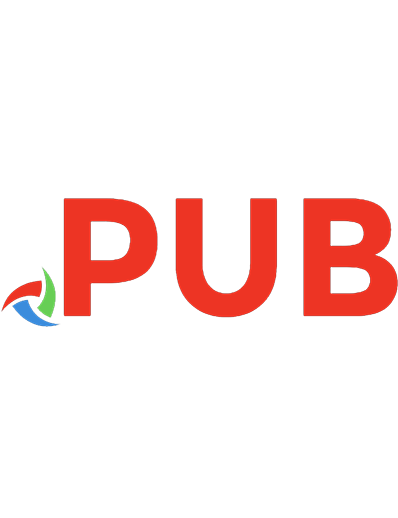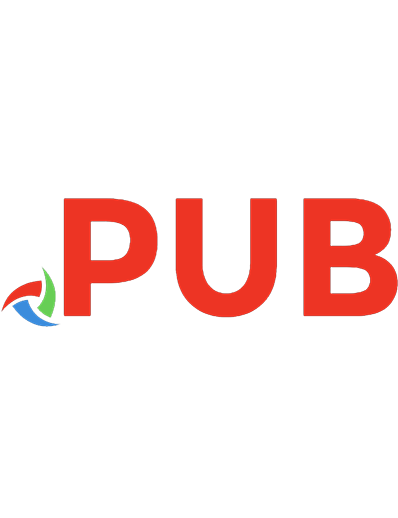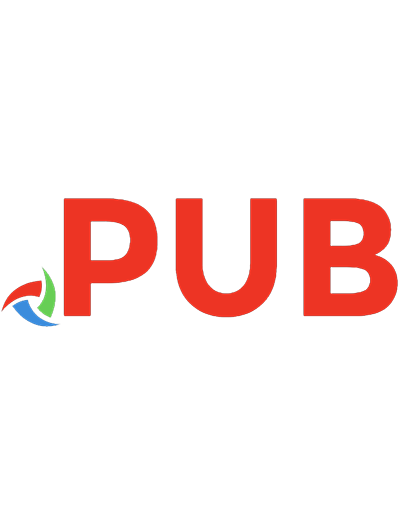The Mystic Spiral: Journey of the Soul [Paperback ed.] 0500810052, 9780500810057
As the inward-winding labyrinth, it constitutes the hero’s journey to the still center where the secret of life is found
489 111 77MB
English Pages 128 [132] Year 1980
Polecaj historie
Citation preview
Journey of the Soul
Jill Purce
THE MYSTIC SPIRAL
TH E MYSTIC SPIRAL Journey of the Soul JILL PURCE 1//ith 174 il/11stratio11s, 32 in co lor
THAMES AND HUDSON
ART A~'D L\L\GINATION
General Eclitor:Jill Purce Drawings in text bvjill Purce Any copv of dris book issued b,· the pub)jsher as a paperback is sold subject to theconrution rharit shall not by way of rradcor othen,;se be !em. resold. hired out or orherwi e circulated ";tbout the publisher's prior consent in any form ofbindmg or cover other than that in which it is published and ";tbout a similar condition including these words being imposed on a subsequent purchaser.
© 19-4Jill Purce This edition published in the Uruted States m 19 Thames and Hudson Inc .. 500 Fifrh A ,·enue, ew York. New York Ill 10 Reprinted 19 5 Library of Congress Catalog Card
by
umber - 9-{,-;-6(,.l
All R1ghtsResen·ed. o part of th.is pubhcanon may be reproduced or transm1tced in any forn1 or bv any means. electromc or merharucal. mcluding phorocopv. recording or anv mfonnation storage and reuie\·al system, \nthout prior permission 111 wrinng from the publisher
Pnnted and bound 111 Yugoslavia
Cont nt Journey of the soul
Flow, form and symbol
7
The evolutionary spiral
9
The breathing cosmos
IO
The life spiral
13
The two eternities
15
The centre
17
God immanent or transcendent?
I
Microcosmic imitation of cosmic rhythms
20
The vortex sphere and the Tree of Life
22
Expanding and contracting spirals within the body
24
Labyrinth and dance
2
'Every cause is the effect of its own effect1
32
The Plates
33
Documentary illustrations and commentaries
97
ACKNOWI.EDGMlNT'>
Objects in the plates are reproduced by co11rtesy
4 the followi11g:
Benaki Museum. Athens .p Bharat Kala Uhavan, Banares 65 Biblioteca Apostolica Vaticana, Rome 48 B1bliothcque Nationale, Paris 34, 37 British Museum, London 7, 9, 10, 26, 27, 33, 45, 5 L 52 Cairo Museum 18 High Commi sioner for New Zealand 47 M. Hosokawa Collection, Tokyo 57 Minneapolis Institute of Arts 50 Museum fiir Isla mische Kunst, Staatlichc Muscen Preussischer Kulturbesitz 29 Museum of Fine Arts, Boston 19 Museum of Mankind, London 12 National Gallery, London 24 National Gallery of Scotland 36 National Monuments Branch, Dublin 56 National Museum of Antiquities of Scotland 46 National Museum of Ireland, Dublin 15 Offentliche Kunstsammlung, Kunstmuseum, Basel 11 Palazzo dci Conservatori, Rome 22 Pierpont Morgan Library, New York 28 Private Collection 1, q Rijksmuseum van Oudheden. Leiden 2 Robinson and Watkins, London 35 Solomon R . Guggenheim Museum, New York 44 Tate Gallery, London 39 Trimty College Library, Dublin 53 Victoria and Albert Museum, London 4, 6, 20, 21, 54
Photographs are by the follotl'i11g: A. J. Aldrich fig . 7 Alinari 23 Archives Photographiques, Paris fig. 77 Bildarchiv Foto Marburg fig. 36 Dr. E. M. Uruins 49 Peter Carmichael 59 Ciancimino Ltd., London 61 Peter Clayton fig. 55 J. E. Dayton fig . 45 M. Dixon 16 Professor Evans, Umversity of London figs . 30, 55 Fievet 17 Fototeca Unione, Rom e fig. 34 Ursula and Augusto Gansser 62 General Electric R and D Center fig. 69 Ian Graham fig. 75 Green Scud10, Dublin 53 Sonia Halliday 60 Hirmer 13, 18. figs. 33, 59 Hunting Surveys Ltd., London fig. 97 Dr. Martin I li.irlimann fig. 25 R. La11110y 3 Andrew Lee 41 Mansell Colkction 32 Lcon.ud von Matt fig. 48 Edwin Smith .p Eileen Twcl·dy 1, 4, 7, 9, 20, 21, 33, 54, tigs. 19, 79, 85, 8(1 , 91 c;rcgorio Yard.mega (14 Roger Wood 8. 'iS
----....
The spir,1/ order ru1111i11,~ tlm>11g/1 nature and scie11ff, t/1ro11g/1 111y.1ticis111 and art, is the .111bject , or that belonging to the Arunta of Australia, which,
\-
7
••
17
when found broken, caused the entire clan such consternation that 'they wandered about aimlessly for a time and finally lay down on the ground together and wailed for death to overtake them ... denoting catastrophe, the end of the world, reversion to chaos' (M. Eliade, The Sacred and the Profane). This axis breaks vertically through all the planes of existence, each of which is demarcated by a step or rung, whether the nine steps of the Egyptian Osirian Mysteries, the seven of the Persian Mithraic initiate, the seven steps of Buddha, the seven notches on the Siberian shamanic tree or the seven steps of the Babylonian ziggurat. Moreover, all cosmic or holy mountains, such as Meru, Gerizim, Kaf, Tabor and Olympus, constitute the primordial connection between heaven and earth. The peak of the mountain is the tip of an upward spiral; it is the point of contact with heaven, which is an invisible downward spiral. Furthermore, all temples are replicas of the holy mountain: at Chartres cathedral one is told that the source of the well descends as far into the earth as the spires go into heaven, thus putting one at the centre. The spire constitutes the 'gate of heaven', or the opening in the upward direction, allowing direct vertical communication between heaven and earth. From this axis, like the hub of the wheel, everything extends, radiates and rotates spirally. The entire universe, with all its spatial and temporal states, is but the spiral manifestation of the still centre; as it rotates it expands, and while still rotating it contracts and disappears to the source whence it came. Through meditation, man puts himself in the position of the whole, of which he is a symbol: his meditative activity simulates the activity of the whole. The Tao Te Ching instructs us:
Pus/, 011 to the ultimate Emptiness, Guard unshakable Calmness, All the te11 thousand things are mol'ing and 11 1orking [Yet] ,,,e can see [the ,,oid, ,,,J,ither they must] return. All things l,011 1ever they flourish Tum a11d go home to the root from which they spra11g. This reversion to the root is called Calmness, It is recognition of Necessity, That 111/,ich is called Unchangi11g. [Now] knowing the Unchanging means Enlightenment, Not k11011'ing it mea11s going blindly to disaster.
God i111111a11ent or transcendent? Mystical thinkers have always argued over the paradox: is God immanent or transcendent? Is the Absolute sepa rated from us, the material world, by countless intervening spheres and planes, and perceptible to us only through emanations or manifested attributes? Or is this same Reality something implicit in the universe, in each one of us, in the Self at the heart of our being? Does, for example, our two-dimensional spiral begin in the centre and travel out stretching ever further towards God Transcendent, or is the direction of the journey inwards through the unfolding levels of awareness, until, as St Catherine of Genoa said, 'My me is God, nor do I know my Selfbood save in Him'? Both halves of this dichotomy exist on the same spiral, whose direction, which is at once a decision, 'rests with the little arrow' (Paul Klee, The TJ,i11ki11g Eye). The potential of this spiral is simultaneous movement in either direction, and so a solution to the paradox.
18
-------- -....... ....
By holding the centre o f the spiral, and pulling it out of the page, we have in our hands, in three dimensions, the moun tainous track, the central spiral alo ng whose winding path so many wearisome ascents have been made. Each tum leads the pilgrim further from the world of illusion; each step in the ascent raises his Soul towa rds the Divine. Every step, however, not only takes him higher and therefore fu rther from the material world, but it also leads him towa rds the centre, towards ' the divine essence dwelling at the apex of man's spirit' (Edith Schnapper, The Inward Odyssey). Movement along this three-dim ensional spiral is at once aspiring and cen tri ng, going towards God without and God within. Seen on the continuum of the spheri cal vortex, any journey away from the centre as the individual and the material wo rl d, and therefore towards God transcendent, leads at the same time on to the centre as the indwell ing God. We find this process depicted in diverse cultures and tradi tions, no matter at what stage in their development, as the spiral mandala, which is at the same time a spi ral m ap of the soul's journey. Human conscio usness is a microcosm; and so any diagram w hich initiates and directs its movement, as the m andala does, is acting as a map. The manda la has been called, by Giuseppe Tucci, 'the whole universe in its essential plan'. Any map of this cosmic journey, described in so ma n y legends and mythologies, is also a map of consciousness and therefore a m andala. The spiral mandala shows the path through the universe, concentrating not on static perfection but on the equilibrium of its essential flow. Reality is not perfection ex cept in the active equilibrium of the fusion of dynamic opposites. This equilibrium is the Yin Yang, whose interlocking spirals are a symbolic cross-section through the spheri cal vo rtex. The mandalic movemen t, described as the
turning inwards through the centre of the outgoing energies, is the motion of the spherical vortex. Thus, there are two approaches to the Divine, both spiral. One is an inward process of regeneration and integration, achieved with the aid of a mandala, and is a concentration into and through the cen tre; the other is the outward pilgrimage of Parsifal, Gilgamesh or Jason. The essenti al unity of the two is illustrated by the inward spiral of Bunyan's Pilgrim's Progress to the Celestial City, of Dante's climb to the summit of Mount Purgatory, and of Sudam a's journey to the Golden City of Krishna. Likewise, when this same paradox - God immanent or transcendent - is seen geometrically, in terms of centre and circu mference, they are not simply interchangeable on the spherical vortex but spiral into one another. For all representations of the spheres, belts or layers of being through whi ch man has to pass, depicted so often in the Middle Ages and Renaissance, are but abstracti ons of the spiral, since the time dimension must be accounted for. Thus the intellect, in its original sense as the spirit, may contain or be contained, be external or internal. As centre or circumference, it is the same. What changes is the viewpoint. This change of viewpoint is so im portant in Sufi, Chinese and certain other philosophies that it is tempting to call it 'central to their outlook on life'; but the words themselves, involving a one-directi onal spatial metaphor, indicate that our language is
19
ill-equipped to express a seeing on the spiral continuum of direction. Our language, governing the interpretations of our perceptions, works on the basis of measurement and division. Thus, the Sanskrit root 111atr-, to measure, is the source of the word for matter itself, as well as material, matrix, metre and Maya - the Indian concept of the illusion of measuring and dividing that we live by, and from which we must eventually free ourselves.
1vficrocosmic imitation of cosmic rhythms The Chinese say that, just as the heavenly bodies have their celestial paths, so we have the Way, or Tao, which gives rise to all movement and is its law. The o riginal fonn of the Chinese character 'Tao' means 'head'. It implies both consciousness and 'going', travelling a way. This would be 'to go consciously', or 'the conscious way'. Its meaning has been translated by Richard Wilhelm as the 'track which, though fixed in itself, leads from the beginning directly to the goal'. It represents the right way, the way of heaven, the way of man. The Tao is cyclic; we read in the Tao Te Chi11g:
There is a thi11g co11ji,scdlyfom1ed, Born bdore hcal'Cll a11d earth. Silc11t a11d 11oid, It stands alone a11d docs not cha11gc, Goes ro1111d a11d does 11ot zz,eary. It is capable of bei11g the 111othcr of the 11 1orld. I k11011 1 11ot its 11a111c So I style it 'the zz,ay'. I gi11c it the 111akcshijt 11a111c (f'thc great'. Bci11g great, it is f11rthcr described as rcccdi11.~, Reccdi11.__
The Tree of Life and the heart 40 The Tree of Life (sec pp. 22- 24 . showm~ the Seph1roth: some human and planetary correspondence,: the pa,s1,·c (kft). neutral (centre) and acri,·e (nght) pillars. Th e descent of light from abo\'e (the lightning fl a,h; 1s the path of the ongmal crcanon, the bringmg of hea,·cn down to earth. 41 .\1an returns along the same path and d1s,ol\'e, the ongmal creation. Taking earth back to hca\'cn, he tra,·els through all the planetary spheres. The o rbit-times of these take gradually longer, like the development of thcu correspondmg faculties within man. 42 The T rce of Life and the life-cycle seen as a spht:rical ,·ortcx (sec p. ),), a rounded entity which expands from, contracts and returns on to Its source. 43 An Egypnan scarab (im ti ate. sec pl. 43 showmg the vorncal mo\'cmcnt wnhin the energy centres and the relanonsl11ps between them (see also pis. 15, 2~ )- (Seal. pmsibly local copy. Lebanon, early 2nd miJlcnni um BC, lk1 rut, Department of Antiqmtics.) 44 A clain·o yant's picture of the heart of the um,-crse; the ulnmatc physical atom seen as a manifestation of pure light force spinning perpetually thro ugh itself (C. W Leadbeater. The Clrnkras, Th eosophical Publishing H ouse . .\1adra, 1971.) 45 The human heart, showing the muscles and their spiral fibres which contract to twi st the blood from JtS canuc,. (Scientific A111erica11 . .\hy 1957.) 46 The Islamic prayer niche or 111ihrah has been called a reminder of the Di,·i ne presence m the heart Lcadmg off the dome. the all-encompassing heart of hea\'en. the 1111hra/, 1s the inner sanctuary where the word of God is sounded. Spualling throughout this niche and through th e shell of the d1,·111c car, arc the vortices of the re,· erberating Word. (~1ausoleum of Shaykh Muhammad ibn Bakran . Pir Bahrm. Iran. 1299-1312.) 47 A mandala mirror-back from Iron-Age Bntam. Reflectmg the multiple images of the One, the mirror is an instrument of meditation (pl. 57). Like the con figurations in the flo,-..· of water. these continuous windings transfo rm into all kmds of natural forms. (Desborough mirror, bronze, Britain. 1st century AD. British Museum, London.)
45
i...
/,--- ....
49 Mazes The lab yrinth both crea tes and protects the centre, and allows entry only on the correct terms. Entry is thus initiation. a step on the path of knowledge. But before kn owledge is revealed, the old preconceptions must be dissolved by re-entry into the preformal state of the womb. The po t (48. 49) is a symbol of the body and w o mb of the M o ther, and in N eolithic Europe it was often m arked with the windings of the underw o rld .
48 Pithos from Pse1ra. (Archaeolog1cal Museum . H er.1klion. Crete.) 49 Cl ay po t fro m V ad as tra. (Romania. c. 3500-2700 BC. Buch ares t Histo rica l Museu m .) 50 The Zulus draw mazes in the s.md with their fingers. This one, drawn after smo king hemp. is like a game. 'You .1re done fo rm the laby rmth' th ey shout, when someone fad~ to reach the centre. the 'royal hut' . (L. H. Samuel son. Some Z11/11 C11sr.1111s a11d Folklore. Lo ndo n 1928.)
I IO
51 The I lopi In










![The Mystic Spiral: Journey of the Soul [Paperback ed.]
0500810052, 9780500810057](https://dokumen.pub/img/200x200/the-mystic-spiral-journey-of-the-soul-paperbacknbsped-0500810052-9780500810057.jpg)